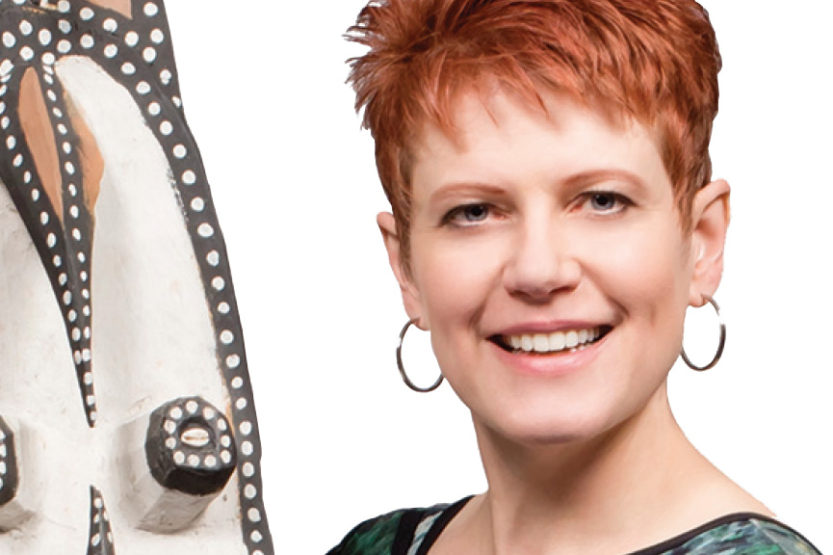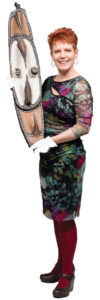In Class: Care taker
 Spurlock Museum collections manager Christa Deacy-Quinn. (Image by L. Brian Stauffer)
Spurlock Museum collections manager Christa Deacy-Quinn. (Image by L. Brian Stauffer) I’m in charge of the physical integrity of the museum’s collection. Our oldest piece is 500,000 years old. It’s a stone tool—and it’s actually in excellent shape.
Many things are only meant to last a couple of generations. A lot of pieces are sensitive to changes in humidity, changes in temperature. Some are susceptible to pests.
I can only take 10 students per class. They work with real artifacts. They learn what the problems are.
We have organic and inorganic artifacts. Fur, feathers, skin—those are some of the organic pieces. For inorganics, we have glass, ceramic, stone—just to name a few. We also have a huge textile collection.
And then, of course—because this makes life more complicated—an artifact may be a composite. Our masks and ethnographic pieces may have anything from plastic to metal to wood to grass to animal tusks or teeth on them. You have to take care of all of the elements in one composite object.
We have artifacts that will stretch out if you hang them or move them a certain way. We can’t fold certain pieces. It’s kind of like taking care of your clothes—different things have different needs. Imagine that magnified across 40,000 pieces.
Something the size of a coffee cup may need a storage enclosure that’s the size of a beach ball. Storage can pose huge space problems. The museum has a constantly growing collection, and only 4 percent to 5 percent of it is on display.
Classes are three hours—half lecture and half lab. The lecture sets up the problem for the lab. I show the students different types of metal polishes, for example. They practice how to polish silver on Plexiglas, because Plexiglas has the same hardness as silver. I don’t want the students polishing things in our collection randomly.
I talk about packing, shipping and storing collections. I also talk about hazards in collections. For example, we have poison darts. Obviously, they require special handling!
We have Roman lead sarcophagus fragments—giant hunks of lead in our museum. We have to have special handling practices with those. Lead can be toxic.
Some artifacts have inherent vice. There’s one on display here now—it’s a gas mask from World War I. It was exposed to mustard gas. That means it’s degrading.
We have an opium pipe with silver coins embedded in it. Silver doesn’t deal well with sulfur or rubber. But the coins adhere to the pipe by being embedded in rubber. So the artifact is making itself degrade. There’s nothing we can do for it.
Sometimes you can’t preserve artifacts, so you have to do your best to keep them around as long as possible. And there’s not always an easy or direct answer.
Some students don’t realize they want to work in museums until they come here. And that’s a really lovely thing—to bring more people into the field.
Edited and condensed from an interview conducted on Dec. 5, 2014.


